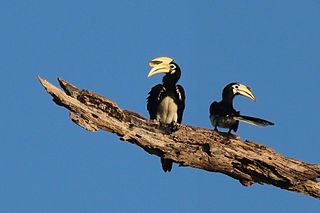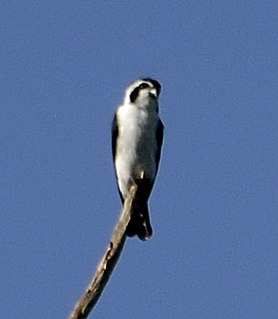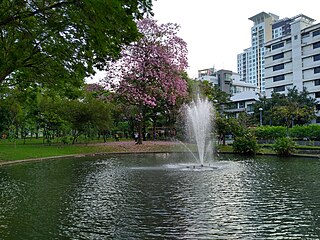
Starlings are small to medium-sized passerine birds in the family Sturnidae. The name "Sturnidae" comes from the Latin word for starling, sturnus. Many Asian species, particularly the larger ones, are called mynas, and many African species are known as glossy starlings because of their iridescent plumage. Starlings are native to Europe, Asia and Africa, as well as northern Australia and the islands of the tropical Pacific. Several European and Asian species have been introduced to these areas as well as North America, Hawaii and New Zealand, where they generally compete for habitats with native birds and are considered to be invasive species. The starling species familiar to most people in Europe and North America is the common starling, and throughout much of Asia and the Pacific, the common myna is indeed common.

The myna is a bird of the starling family (Sturnidae). This is a group of passerine birds which are native to southern Asia, especially India, Pakistan and Bangladesh. Several species have been introduced to areas like North America, Australia, South Africa, Fiji and New Zealand, especially the common myna which is often regarded as an invasive species. It is often known as "Selarang" and "Teck Meng" in Malay and Chinese respectively in Singapore, due to their high population there.

The little pied cormorant, little shag or kawaupaka is a common Australasian waterbird, found around the coasts, islands, estuaries, and inland waters of Australia, New Guinea, New Zealand, Thailand, Myanmar, Singapore, Brunei, Timor Leste, and Indonesia, and around the islands of the south-western Pacific and the subantarctic. It is a small short-billed cormorant usually black above and white below with a yellow bill and small crest, although a mostly black white-throated form predominates in New Zealand. Three subspecies are recognised. Until recently most authorities referred to this species as Phalacrocorax melanoleucos.

The common myna or Indian myna, sometimes spelled mynah, is a bird in the family Sturnidae, native to Asia. An omnivorous open woodland bird with a strong territorial instinct, the common myna has adapted extremely well to urban environments.

The common hill myna, sometimes spelled "mynah" and formerly simply known as the hill myna or myna bird, is the myna most commonly seen in aviculture, where it is often simply referred to by the latter two names. It is a member of the starling family (Sturnidae), resident in hill regions of South Asia and Southeast Asia. The Sri Lanka hill myna, a former subspecies of G. religiosa, is now generally accepted as a separate species G. ptilogenys. The Enggano hill myna and Nias hill myna are also widely accepted as specifically distinct, and many authors favor treating the southern hill myna from the Nilgiris and elsewhere in the Western Ghats of India as a separate species.

The Javan myna, also known as the white-vented myna, is a species of myna. It is a member of the starling family. It is native to Bali and Java. It has been introduced to other Asian countries, and as far away as Puerto Rico.

Jurong Bird Park is an aviary and tourist attraction in Jurong, Singapore. The bird park covers an area of 0.2 square kilometres on the western slope of Jurong Hill, the highest point in the Jurong region. It is one of the parks managed by Mandai Wildlife Reserve the makers of Singapore Zoo, Night Safari, Singapore and River Wonders.

The Indian pied myna is a species of starling found in the Indian subcontinent. It is usually found in small groups mainly on the plains and low foothills. It is often seen within cities and villages although it is not as bold as the common myna. It produces a range of calls made up of liquid notes.

Thale Ban National Park is a forested area south of the Banthat Mountains in southern Thailand, in the south of Satun Province bordering Malaysia; it borders Taman Negeri Perlis park. The park was established on 27 October 1980. It covers an area of 196 square kilometres of Khuan Don and Mueang Satun districts.

The pied starling or African pied starling, is a bird endemic to South Africa, Lesotho and Eswatini. It is common in most of its range, but largely absent from the arid northwest and the eastern lowlands of South Africa. It is found in open habitats such as grassland, karoo scrub, thornbush and agricultural land, and often associates with farm animals.

The oriental pied hornbill is an Indo-Malayan pied hornbill, a large canopy-dwelling bird belonging to the family Bucerotidae. Two other common names for this species are Sunda pied hornbill (convexus) and Malaysian pied hornbill.

The pied falconet, is a species of bird of prey in the family Falconidae. It is found in Bangladesh, Bhutan, China, Hong Kong, India, Laos, and Vietnam. Its natural habitat is temperate forests.

The yellow-faced myna is a species of starling in the family Sturnidae. It is found in New Guinea and nearby smaller islands, where its natural habitat is subtropical or tropical moist lowland forests. The long-tailed myna was formerly included as a subspecies. One of the largest species of starling, this species attains 23 to 26 cm in length and weighs around 217 g (7.7 oz). They have dark plumage with a metallic lustre and bright orange facial markings and beak. These birds are social and omnivorous. Their diet consists of fruit and insects for which they forage high in the canopy. They are common birds with a wide range, and the International Union for Conservation of Nature has assessed their conservation status as being of "least concern".

The black-collared starling is a species of starling in the family Sturnidae. Its plumage is black and white, with a black collar. It is found in southern China and most of mainland Southeast Asia, and has been introduced to Taiwan, Malaysia and Singapore. Its habitats include grassland, dry forest and human settlements. The International Union for Conservation of Nature (IUCN) has assessed it as being of least concern.

The Mekong wagtail is a species of bird in the family Motacillidae. It was first described in 2001 and named in honour of the late Cambodian ornithologist Sam Veasna. It is a black and white bird, similar in appearance to the African pied wagtail, although their ranges do not overlap. Its facial features and distinctive voice distinguish it from other black and white wagtails in southeastern Asia.

Gracupica is a genus of Asian birds in the family Sturnidae. It is sometimes merged with Sturnus or Sturnia.

Santiphap Park is an 8-acre (0.032 km2) park in Bangkok, Thailand. It is located between Ratchawithi Road and Rang Nam Road in Ratchathewi district.

Bali Bird Park, is a tourist attraction in Bali, Indonesia. It is located at the Gianyar Regency and has an area of 2,000 square metres. The Bird Park houses more than 1,000 birds representing more than 250 species in an enclosed aviary.
Pied myna has been split into three species:

The Javan pied myna is a species of starling in the family Sturnidae. Its Indonesian name is jalak suren. Its plumage is black and white, with a black collar. It was found in most of Java and Bali and formerly in southern Sumatra. Due to mass collection for the illegal wildlife trade and heavy pesticide use in the agricultural lands it used for feeding, it is now feared to be extinct in the wild.



















